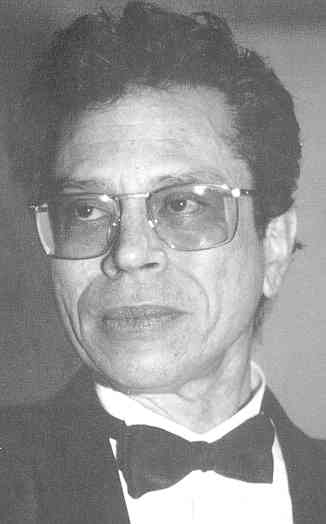11.13.3 Juan Leovigildo Brouwer (Leo Brouwer).

Juan Leovigildo Brouwer, known as Leo Brouwer, is a Cuban composer, guitarist, and conductor. He was born in Havana on March 1, 1939, to a family of musicians. He is the grandson of Ernestina Lecuona and the great-nephew of Ernesto Lecuona.
He began playing guitar at the age of 13, under the influence of Isaac Nicola. He gave his first recital at the age of 17, although by this time his compositions were already beginning to attract attention. Prelude (1956) and Fugue (1959), both influenced by Bartok and Stravinsky, are examples of his early understanding of music not specifically for the guitar.
He studied music in the United States, specifically at the University of Hartford and later at the Juilliard School, where Stefan Wolpe taught him composition.
Brouwer composed his Simple Studies 1-20 very early in his artistic career, with the aim of expanding the technical requirements of guitar playing. With these studies, he initiated a major body of work in the development of guitar technique, making them not only technically demanding but also highly musical.
Brouwer’s early works represent his Cuban context and show the influence of Afro-Cuban music and its rhythmic style, an example of which is Elogio de la Danza. Later works such as his Sonograma 1, which reflects the use of uncertainty, Canticum (1968), the first part of which depicts the process by which an adult insect emerges from its cocoon and incidentally incorporates an unusual tuning change on the sixth string to E flat, The Eternal Spiral (1971), Guitar Concerto No. 1, Parable (1973), and Tarantos (1974) followed. This period brings together the use of serialism, dodecaphonism, and open serial modes, and are partly inspired by composers Leo listened to with preference, such as Luigi Nono and Iannis Xenakis.
Later Leo Brower was almost entirely minimalist, never going as far as Steve Reich, but with an exploration of this style it is evident. Brouwer describes it as the development of a modular system. The Black Decameron (1981) probably the first in this style, the Sonata (1990), Cuban Landscape with Bells (1996) and Hika (1996) in memory of the Japanese composer Tōru Takemitsu.
Brouwer is an avid arranger of other composers such as Elite Syncopations and The Entertainer by Scott Joplin, or Fool on the Hill by The Beatles (Lennon/McCartney) among many others that he has arranged for solo guitar.
Leo Brower is the General Director of the Cuban National Symphony Orchestra and, since 1981, the General Director of the National Philharmonic Institution. He is also a researcher, educator, and cultural promoter. His advisory work on radio and television in Cuba is of significant significance. He organized the first music departments of the Cuban Institute of Cinematographic Art and Industry (1155 23rd Street between 10th and 12th Streets, Vedado, Plaza de la Revolución) and of the Teatro Musical de La Habana, and has contributed to the renewal of the curricula for harmony, counterpoint, and composition.
Leo Brower was the founder and director of the ICAIC Sound Experimentation Group. He has served on juries at various national and international festivals and has conducted more than 80 symphony orchestras and chamber ensembles worldwide. Principal Conductor of the Córdoba Orchestra, Spain, and Honorary Member of UNESCO, the SGAE (Spanish Society of Music), the Italo-Latin American Institute, and the Royal Academy of Fine Arts of Granada, he is also a guest composer at the Berlin Academy of Sciences and Arts.
He has been recognized with: La Chitarra con amore 1997 (Milan, Italy); Manuel de Falla 1998 (Spain); Adopted Son of the city of Córdoba by extension to Andalusia and UNESCO Musician of the Year 2001 and Doctor Honoris Causa from the Higher Institute of Art (Calle 120 No. 1110 e/ 9na y 13, Playa. Havana, Cuba). In 2010 he won the SGAE Tomás Luis de Victoria Award; the highest recognition for living authors in the Hispanic American and Lusophone spheres. Other awards bestowed upon this maestro of Cuban music include: 1998. National Music Award; 1982. “Alejo Carpentier” Medal; 1984. “Félix Varela” Order and 2009 National Film Award.
Leo Brower is nominated for the Latin Grammy Awards in 2010. He is considered one of the five best living guitarists in the world. He is a candidate in the classical music category with the CD “Comprehensive String Quartets,” featuring the Havana Quartet.
Musical works.
Guitar Concertos: Guitar Concerto No. 1, Concerto No. 2 “from Liège” (1981), Concerto No. 3 “Elegiac” (1986), Concerto No. 4 “from Toronto” (1987), Concerto No. 5 “from Helsinki”, Concerto No. 6 “from Volos”, Concerto No. 7 “Havana”, among others.
For solo guitar: Sonata, Epigrammatic Preludes, Two popular Cuban themes (lullaby, ojos brujos), Two popular Cuban airs (Guajira criolla, Zapateado), Praise of Dance, Simple Studies, One Day in November, Characteristic Dance, Three Concertant Dances, Rite of the Orishas, Fugue No. 1, Hika “In Memorium Toru Takemitsu”, About Heaven, Air and Smile (for guitar octet), among many others.
For other instruments: Sonata for solo cello, String Quartet No. 1, String Quartet No. 2, String Quartet No. 3, Life Itself (for piano, violin, cello and percussion), Ballad (flute and strings), Epic Song (for chamber orchestra), Love Songs (for mixed choir, on texts by Federico García Lorca and José Hernández).








